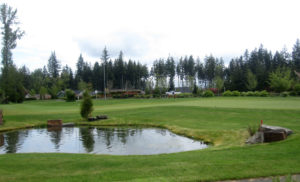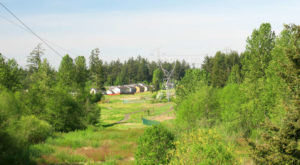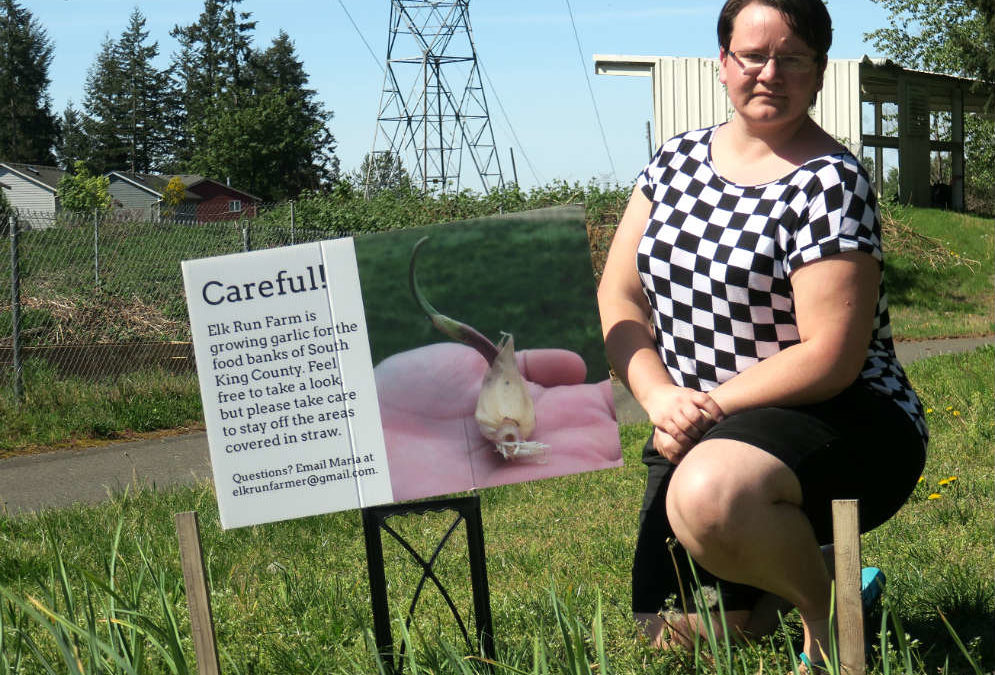In the 1990’s the rage in real estate development was both stand alone and master planned community golf course construction. The Golf Club at Newcastle repurposed an old construction landfill with 36 links, a stunning club house, and outstanding views to Puget Sound and beyond. A Jack Nicklaus Signature Golf Course was built at Snoqualmie Ridge a new plateau neighborhood on former Weyerhaeuser timber lands above downtown Snoqualmie, WA. Now almost built-out, Snoqualmie Ridge is a mixed-use community with new a public school, a commercial downtown, housing for a variety of ages and incomes, a business park, and the golf course as its featured recreational opportunity. Trilogy at Redmond Ridge converted former timberlands to a golf course and residential development serving a 55+ senior community. As a Professional Civil Engineer, during this golf link construction surge, I reviewed engineering design drawings, Integrated Pest Management Plans, environmental documents, and wrote discretionary land use permits for these three King County golf courses.

Trilogy at Redmond Ridge Golf Course
Golf courses as a recreational amenity were a profitable and desirable solution to keep open space and add real estate value. At its peak, real estate developers were rewarded a ten to 25% premium for new homes built next to the golf green compared to homes off links (Ed McMahon, Senior Fellow, Urban Land Institute). Homeowners coveted the views and green space. Golfing was in its prime! I was riding the wave in my consulting business with the developers to build courses for what seemed like an ever-expanding golf population.
Now 25 years later, golf’s popularity has changed dramatically. By 2013, there were 72 public and private golf courses in the Seattle metropolitan area (Golf Link, 2013). For the decade preceding 2013, for every new course being opened, ten courses were closed. (National Golf Foundation, 2013). At the same time as the number of golf courses has decreased there is an ever-shrinking pool of golfers. Sixty-one percent (61%) of the golf players, defined as someone that only plays one round of links in a 12-month period, are 50 years and older. Only 17% of the golfers are under 40 years old. (October 2016, Golf Player Demographic Statistics–Statistics Brain) Golfing is on a downward trend. Granted 29 million golf players is still a large demographic, but with only five million Millennials—those born between 1980 and 2000—playing golf, the decrease in the number of golfers is dramatic.
Even so, golf course master planned communities still provide an emotional and community need for its residents–a place for connection, commonality, and shared activity. Neighbors have common interests and can spend leisure time playing golf. No one knows this more than my 77-year old Californian aunt and uncle. They absolutely fit the key golfer demographic and play golf two or three times a week, live next to a golf green, and are thoroughly enjoying retirement. It’s their social life and keeps them young—walking the course and swinging the club!
So, if Millennials don’t play golf, what drives them? In a 2013 Aetna, What’s Your Healthy Survey, 24% of the Millennials have a daily commitment to eating and exercising right when compared to only 12% of the Boomer generation. An infographic prepared by Goldman Sachs, surmised that the Millennials “are dedicated to wellness, devoting time and money to exercising and eating right.” Am I born in the wrong generation? As a Baby Boomer, I have a daily commitment to eating well, exercising regularly and I don’t play golf! So, what is an alternative land use that still provides community and open space?
What’s is a golf course owner to do?
At the time, I was permitting new golf courses, the 18-hole Elk Run Golf Course, owned by Covington Golf, Inc. in Maple Valley, WA was constructed. Nine holes were built on land leased from King County and nine holes wound their way through the master-planned community. For over 20 years, the golf culture created community and neighborliness. Then as with everything in life, things changed. The Tahoma School District secured Elk Run’s leased nine holes for the site of their new public high school, now scheduled to open in Fall 2017. As owners, Covington Golf, Inc. decided a nine-hole course would not thrive and the last club was swung at Elk Run in 2014.

2016 Garlic Crop at Elk Run Farm
After searching for a new use for their golf course land, the Elk Run owners partnered with the South King County Food Coalition (“SKCFC”) to build a farm to grow produce for local food banks! For clients served by the SKCFC’s 12-member coalition, often freshly-grown, healthy produce is rare. Many food banks lack fresh fruits and vegetables for their clientele, as canned and processed foods and grains are much easier to collect, store, and distribute. Despite King County’s riches, 12.4% of the county’s population live below the poverty level (Employment Security Department). Of the 38 cities in King County, eleven of the cities with the lowest annual incomes are in South King County. The Maple Valley Food Bank, one of the South King County Food Coalition’s (“SKCFC”) 12-members, served 5,356 different individuals and 901,375 pounds of food in 2014-2015. There is an obvious need for fresh produce production for food banks in South King County. SKCFC agreed to sponsor the Elk Run Farm project as a concrete way to educate, nourish, and provide locally-grown produce to this important group of eaters.
Elk Run Farmer—Maria Anderson

Elk Run Farmer Maria Anderson
Maria Anderson came to farming out of a passion for good health which she only began to realize as a young adult. As a 21-year old when she started cooking for herself, she recognized her passion for good food. Through her 20’s, Maria’s understanding of the United States’ food system continued to expand with the ultimate recognition that American society is totally disconnected with where its food comes from. Humans have a regular, daily requirement to eat food. Most in our country (unless they are food insecure) have de facto unlimited food choices. Unfinished restaurant meals are scraped into the garbage or taken home in a little white container for the next day’s meal. Grocery stores are chock full of eating choices whether in the deli, produce section or interior, processed food aisles. For most, food is always there. There is no reason to know, understand or think about how it gets to our mouths.
For Maria, her thoughts on how much food, in what locale, at what scale and where it should be grown continued to pester her. This curiosity about food drove her to intern on several Western Washington farms. Should our country really have more than one-half of its fruits and vegetables grown in California? Could localized vegetable production be expanded locally during a region’s peak growing season? Should food waste have a second purpose rather than the garbage can? Could food scraps be used to feed chickens or pigs or create compost? Are certain crops well-suited for large scale agriculture? Maria keeps developing her answers to these important questions not only by reading and studying, but also by living the life of a farmer.
Beginning in 2016, Maria, a Millennial, is Elk Run Farm’s farmer growing organic vegetables on the one-acre former grassy field adjacent to the old club house beginning in 2016. Initial funding came via a three-year grant from the Partners to Improve Community Health (“PICH”) through the Center for Disease Control. With any new venture and especially farming, there are numerous start-up costs including equipment, secure storage facilities, irrigation infrastructure, and seed costs. Now in 2017, excitement continues to accelerate for the Elk Run Farm project as funding is secure from the South King County Rotary Clubs, The Bullitt Foundation, Seattle Foundation and the King Conservation District’s Food Systems grant program.

Elk Run Farm Expansion Area?
Goals for this growing season include harvesting 10,000 pounds of produce from the one-acre farm. Yes, it is a small amount compared to the need, but a critical start to feeding an important community. Tomatoes, peppers and eggplant will cover one 5,000 square foot bed (about the same size as a typical City of Seattle single family building lot). Equal sized beds of summer squash, brassicas (broccoli, cauliflower, etc.), legumes (peas and beans), and garlic are expected. One 5,000 square foot bed will be planted in cover crops to nourish the soil and provide forage for bees. The remaining 10,000 square feet will grow lettuce greens and root crops like carrots and radishes.
Maria is optimistic and excited about the future. With a new high school opening right next to door, there are opportunities to teach horticultural classes for young people just steps away. The Urban Agricultural program at Des Moines-based Highline College is expected to assist with farm activities. The neighboring community with former golf course frontage, could be enticed to participate in farming education and eating! The opportunities are endless.
As golf’s popularity continues to wane, are there other chances to convert former golf course grounds to farming? If so, open space is saved and food is grown! We all eat at least three times a day, so it is possible! Is growing food where people live a sustainable new trend, to create more community and build well-being? Could there even be a price premium to live next to the farm or in a farm community? As Millennials form families and hip Baby Boomers age and each is looking for community, will on-site farms be the draw to re-ignite the master planned community?
Kathryn Gardow, P.E., is a local food advocate, land use expert and owner of Gardow Consulting, LLC, an organization dedicated to providing multidisciplinary solutions to building sustainable communities. Kathryn has expertise in project management, planning, farmland conservation, and civil engineering, with an emphasis on creating communities that include food production. Kathryn’s blog muses on ways to create a more sustainable world and good food!

